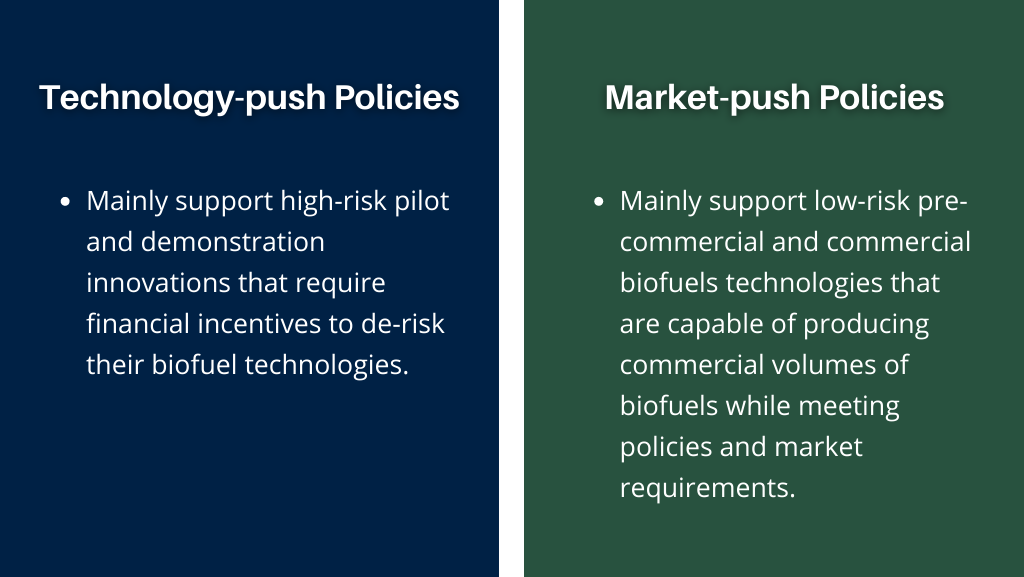Bioenergy Policy
The transport sector accounted for 29% of the world’s energy consumption in 2015 and it remains heavily reliant on fossil fuels, particularly petroleum-based liquid fuels (International Energy Agency, 2017). Biofuels have proven to be one of the most successful ways of decarbonising the transport sector with global production and consumption increasing from over 64 billion liters in 2007 to over 145 billion liters in 2017.
Biofuels policies have been and will continue to be essential if we are to foster the growth of biofuels to decarbonise transport, particularly long-distance transport. Biofuels policies have been developed and implemented to encourage the production and use of biofuels. Biofuels policies can take many forms including blending mandates, excise tax exemptions and incentives, renewable or low carbon fuel standards, fiscal incentives and public financing. These policy instruments influence different stages of biofuel production and use. These policies can be divided into technology-push and market-pull types of policies.

Techno-economic Modelling


Technology-push and market-pull biofuel policies. Countries that use a mixture of market-pull and technology-push policy instruments have been most successful at increasing biofuels production and use and also at developing and deploying less mature emerging biofuels production technologies.
Technology-push policies typically help drive early stage technology development such as research and development (R&D), demonstration and commercialization of biofuels. They are used to help reduce the cost of research and development, drive new ideas and help take early stage technologies through the financial “valley of death” that exists between initial development and commercialization. In a complementary fashion, market-pull policies are used to support technologies that are relatively mature, help create a demand for biofuels, such as conventional ethanol or biodiesel. These policies try to shield biofuels from direct competition with fossil fuels, help attract investments, benefit from economies of scale and encourage technological and organizational learning through their diffusion.
The countries that have achieved the most success in growing their production and use of biofuels have used a mixture of market-pull and technology-push policies. It is apparent that a balanced distribution of policy efforts between demand-pull and technology-push has proven most successful in fostering development and deployment of biofuels production technologies and the growth of biofuels markets, as seen in the USA, Brazil and European Union.
The researchers at Forest Products Biotechnology and Bioenergy research group have been leading a periodically issued Implementation Agendas report that summarises and evaluates the effectiveness of policies being used within IEA Bioenergy Task 39 member countries to encourage the production and use of biofuels. It also summarises the market penetration of biofuels in member countries as well as other key countries such as China and India. So far, the Task has published five updates of this report (in 2007, 2009, 2014, 2017 and 2018-2019). The last report update was published in February 2019 and is available on the IEA Bioenergy Task 39 website.